
The House of Zinzendorf and Pottendorf was the name of an old and important noble family whose origins are in Austria. It is not to be mistaken with the princely House of Sinzendorf, as the two don't share same ancestry.

The House of Zinzendorf and Pottendorf was the name of an old and important noble family whose origins are in Austria. It is not to be mistaken with the princely House of Sinzendorf, as the two don't share same ancestry.
The family was firstly mentioned in 1114 in a document written by Hermann von Vohburg, Bishop of Augsburg. Apart from their possessions in Austria, they also reigned over the Lordship of Pottendorf in Baden, which was incorporated into their name as Zinzendorf und Pottendorf. In 1460 they were awarded with the title of Baron by Frederick III, Holy Roman Emperor, while in 1662 they were raised to the dignity of Imperial Count by Leopold I, Holy Roman Emperor.

Nikolaus Ludwig, Reichsgraf von Zinzendorf und Pottendorf was a German religious and social reformer, bishop of the Moravian Church, founder of the Herrnhuter Brüdergemeine, Christian mission pioneer and a major figure of 18th century Protestantism.

Berthelsdorf is a former municipality in the district of Görlitz, in the southeastern part of Saxony, Germany. On 1 January 2013, it was incorporated into the town of Herrnhut.
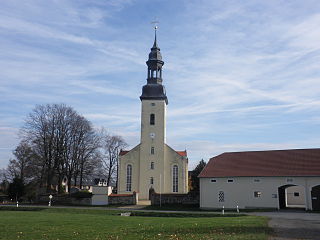
Großhennersdorf is a village and a former municipality in Görlitz district, Saxony, Germany. Since 1 January 2011, it is part of the town Herrnhut. The Bundesstraße 178 connects Großhennersdorf with Löbau and Zittau.

The House of Nesselrode is an ancient German noble family originating in the Duchy of Berg. Over the centuries, the family expanded their possessions through marriage with the most powerful families of the region. As a former ruling family they belonged to the small circle of Uradel.

Count Ernst Rüdiger von Starhemberg was military governor of Vienna from 1680, the city's defender during the Battle of Vienna in 1683, Imperial general during the Great Turkish War, and President of the Hofkriegsrat. By birth he was member of the House of Starhemberg.

The House of Hohenlohe is a German princely dynasty. It ruled an immediate territory within the Holy Roman Empire which was divided between several branches. The Hohenlohes became imperial counts in 1450. The county was divided numerous times and split into several principalities in the 18th century.

The House of Fürstenberg is the name of an old and influential Swabian noble house in Germany, based primarily in what is today southern Baden-Württemberg near the source of the Danube river.

The House of Sinzendorf was a Bavarian-Austrian noble family with Upper Austrian origin, not to be confused with the Lower Austrian House of Zinzendorf. The family belonged to prestigious circle of high nobility families, but died out in 1822 in the male line.
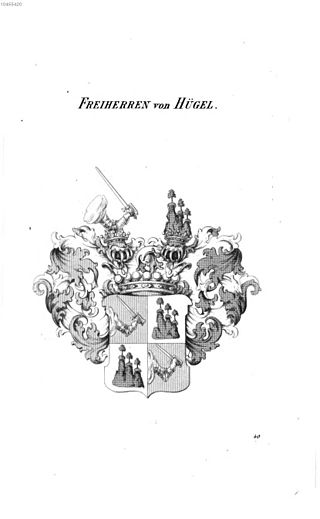
The House of Hügel is a German noble family originating from Württemberg. In 1801 the family was raised to the hereditary rank of Imperial Baron by Francis II, Holy Roman Emperor, while on 13 June 1879 the family was raised to the hereditary title of Count in the Kingdom of Württemberg by King Charles I.

Saalburg-Ebersdorf is a town in the Saale-Orla-Kreis district, in Thuringia, Germany close to the Bavarian border. It is situated on the river Saale, 10 km southwest of Schleiz, 30 km west of Plauen and 30 km north-west of Hof.
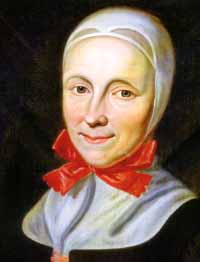
Anna Caritas Nitschmann, Countess von Zinzendorf und Pottendorf, was a Moravian Brethren missionary (Missionarin), lyrical poet, and the second wife of Count Nicolaus Ludwig Zinzendorf. By virtue of her marriage, she became a member of the House of Zinzendorf, one of the most prominent noble families in the region.

Imperial Count Christian Renatus von Zinzendorf und Pottendorf was the charismatic leader of the Single Brethren's Choir of the Moravian Church and of Herrnhaag, a Christian religious community built near Büdingen by his father, Count Nicholas Ludwig, head of the Brüdergemeine or Moravian Unity. Christian Renatus, affectionately known as Christel, took his father’s marriage religion (Ehereligion) literally, proclaiming himself to be the living "Sidewound of Christ" in 1748, which meant he was the embodiment of Christ's sacrificial and compassionate love.

Herrnhaag was a communal spiritual centre for the Moravian Unity, an early form of Protestantism. It and Marienborn, a nearby sister community, are located in the Wetterau, an area of Hesse, north of Frankfurt am Main in Germany.

Hohengeroldseck was a state of the Holy Roman Empire. It was founded by the House of Geroldseck, a German noble family which arrived in the Ortenau region of Swabia reputedly in 948, though the first mention of the family is documented in the 1080s. The family line went extinct in 1634 and was succeeded by the Kronberg and Leyen families. In 1806, the county was raised to a Principality and adopted the family name of Leyen. Late in 1813, the Principality was mediatized by Austria and its name reverted to Hohengeroldseck, but the history of the state ended when Austria ceded it to the Grand Duchy of Baden in 1819 and merged with the district of Lahr in 1831.

Count Karl von Zinzendorf und Pottendorf was a Saxon-Austrian civil servant. He served the government of Austria in a variety of capacities, including as governor of Trieste, and rose to high rank at the Habsburg court. His massive diary, written daily over a period of about 66 years, is an important historical documentary source for his era, both in politics and in the arts.

The House of Khevenhüller is the name of an old Carinthian noble family, documented there since 1356, with its ancestral seat at Landskron Castle. In the 16th century, the family split into the two branches of Khevenhüller-Frankenburg, Imperial Counts from 1593, and Khevenhüller-Hochosterwitz, raised to Imperial Counts in 1725 and, as Khevenhüller-Metsch, to princely rank (Fürsten) in 1763. The family belongs to high nobility.

Countess Louise Caroline von Hochberg, born Geyer von Geyersberg, from 1787 Baroness von Hochberg, from 1796 Countess of Hochberg, was the second wife of the Margrave and later Grand Duke Charles Frederick of Baden. Her descendants eventually ascended the grand ducal throne and reigned until 1918.
Sophie Christiane of Wolfstein was Countess of Wolfstein by birth and Margravine of Brandenburg-Bayreuth-Kulmbach by marriage.
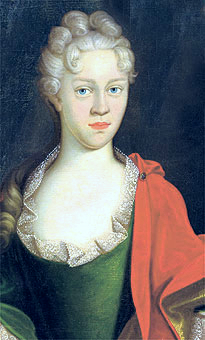
Erdmuthe Dorothea, Countess of Zinzendorf and Pottendorf was a German Pietist and hymn writer.
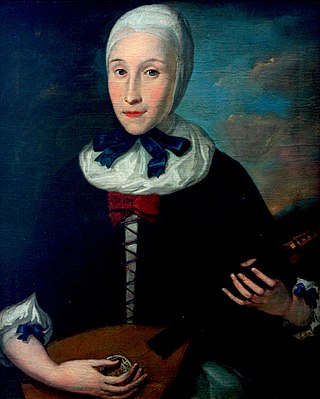
Benigna Zinzendorf, also known as Henrietta Benigna Justine Zinzendorf von Watteville (1725–1789), was the founder of the first boarding school for girls in the British American colonies, which became Moravian College. She was a missionary among Native Americans and assisted her father, Count Nicolaus Zinzendorf, and her husband, Bishop Johannes Langguth, in their religious activities in Europe and America. She enjoyed music and was an Eldress to girls' choirs beginning at the age of 14 and was a leader in an adult choir after she was married.